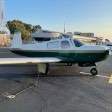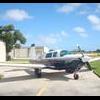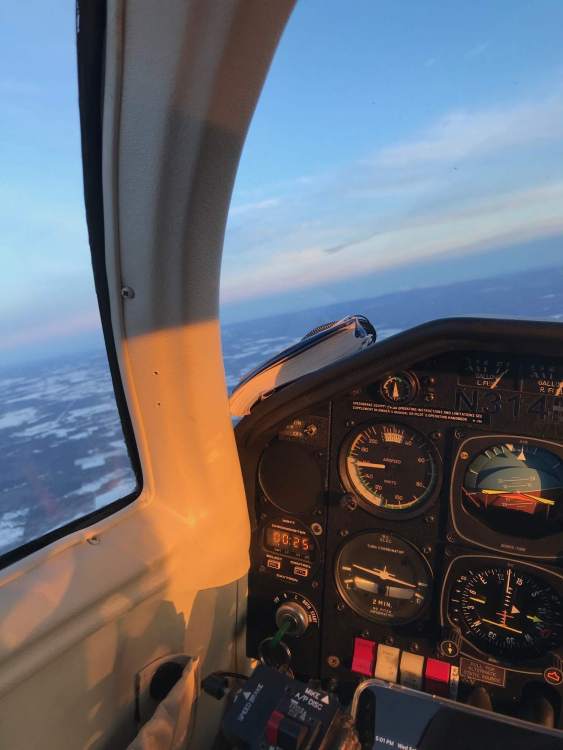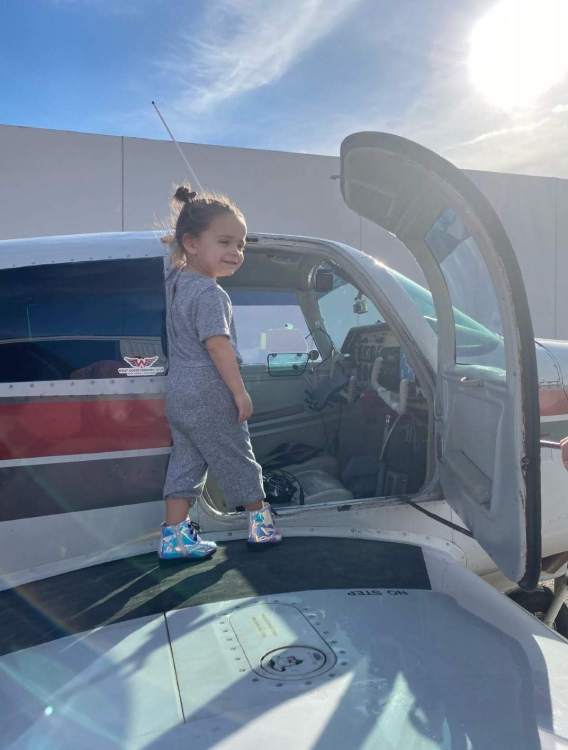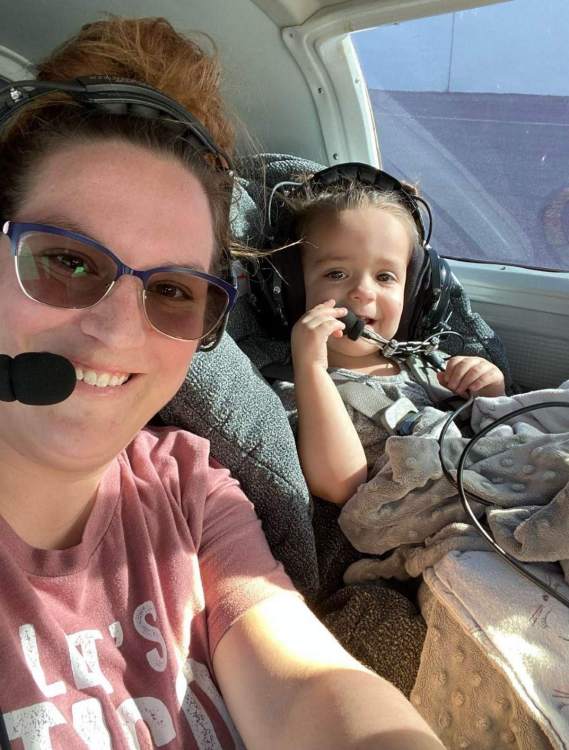Leaderboard
Popular Content
Showing content with the highest reputation on 02/15/2020 in all areas
-
Here is why I disagree with this, and feel free to rip into me if you disagree: by waiting for what actually caused this accident whether it is fuel starvation, medical or a prop falling off, we will only think about that one cause, and one or two solutions. On the other hand, monday morning quarterbacking these accidents, it forces us to think about the different scenarios, however unlikely, that cause various kinds of accidents. I have never considered my prop falling off the airplane on approach before. Probably due to the low likelihood of this ever happening. It is not something I will ever worry about, but it is beneficial to think about, and to theorize what I should do in this event. Just my .027 points
-
speculative "what if" narrative is one thing, conclusive positions based on speculation (its safe to say fuel starvation was an issue) is counterproductive at best and rather hurtful to surviving friends and relatives about the pilots (yes they were both pilots) judgmental skills. May I ask we keep kindness in our speculation?5 points
-
Isn't "speculation" how we come up with all possible "what if" scenarios? I'm with @ChrisV in that we should not wait for the NTSB to give us the one, actual cause, but should be speculating all the possible causes and learning from all of them. I for one, do a lot of formation flying. And have always thought that one of the benefits is having "assistance" in the air in the event of a problem. it's also interesting that there wasn't any communication. It's normal that only Lead would be talking to ATC. But that doesn't preclude any of the others in the flight from speaking up if there is a problem. So I'm speculating that if this airplane was 4th in the formation and they were on an overhead break to land, then it would have been the one airplane, not in sight of any of the others during the landing maneuver. Even if they were not on tower frequency but were on the inter flight freq, Lead and the other members of the flight, would have known if they had said something. This makes me think it was a very sudden event or one very close to the ground. Regardless, it is a tragedy and our thoughts go out to those family and friends of the pilots.5 points
-
That will do it. Keep in mind it always defaults to Vectors. My SOP is to pull out the chart and brief the approach before entering it into the box. The situational awareness provided by the Plan View and selecting an appropriate transition is as important a part of the briefing to me as "the numbers." Maybe more.3 points
-
Hi everyone, I received some great news yesterday. J.P. Instruments has agreed to join our efforts to raise money for the Bill Gilliland Foundation by providing a JPI 450S fuel monitor for our silent auction at our Summer Conference & Retreat June 11-14 at the Sunriver Resort, Oregon. The Aviation Consumer’s, Product of the Year. “JPI’s FS-450 is our top choice because it has all the options you need for fuel management.” -Aviation Consumer The FS-450 is the best fuel management instrument on the market today. This instrument retails for $750.00 so this is quite generous of them. https://www.jpinstruments.com/ REGISTER FOR THE SUMMER CONFERENCE & RETREAT HERE! Sunriver Resort, Sunriver, Oregon June 11-14, 2020 MOONEY CLUB SHOP GRAND OPENING! On another note: I have been getting quite a few requests for West Coast Mooney Club gear, ie: Clothing, Phone Cases, Backpacks...etc. That being the case I have created a shop where you can get some great SWAG and get a 15% discount for the next two weeks. We have something for everyone. Take a look at the examples below and go visit the shop and look around. This is a not for profit shop. I have put it in place so you can enjoy some great products and show some love for Mooney's and the West Coast Mooney Club! Enjoy! See Examples Below: Go To The Shop HERE2 points
-
2 points
-
2 points
-
I strongly agree with others that think it's useful to discuss all possible causes because it broadens the scope of things we add to our own level of experience. Let's suppose it was a prop failure but thinking about fuel starvation creates another reminder to be 100% sure about fuel requirements and supply. Another possibility not discussed as to why no evidence of fuel in photos and no fire is the possibility this plane was equipped with bladders that survived the impact. I would like to know if it was because looking at the damage to the area of the wing that contains fuel and if bladders were present and held the fuel it would be clear evidence that they do add a level of protection against fire. I'm sure this will become know from the investigation. We can speculate and still be respectful to all involved in this sad situation2 points
-
The TT is a GREAT Autopilot and is NOT subject to "Closed Loop": systems. Thank goodness! We have installed a bunch of them and the customers are just LOVING them!!!!!! Also, we try to post here as much as we can barring workload. If you want to, send your email to info@bakeravionics.com and we will add you to the mailing list, no spam, about the newest tech on the market and about the latest developments as we get the info. Just a thought! Also follow us on Facebook if you want. Not trying to plug the company, per se, just trying to help. I am on here enough, I hope everyone knows this is not my motive!!!!2 points
-
I used to do a lot of formation flying. We always strived for precision and tried to keep the power changes to a minimum. Once on someone’s wing, tiny and infrequent power changes seemed to be the way to go. We strived to figure out our power settings for different maneuvers so we could keep the throttle jockeying to a minimum. My step fathers nephew was a fighter pilot in the Air Force for 25 years. I asked him once for some guidance on formation flying. That conversation lasted over four hours. It got down to statements like “I would start with my sight line between this rivet and a sensor on the nose then sweep it to this bolt on the windshield during a left turn, then sweep my sight line back to the sensor on rollout.” He would say exactly what power increase or decrease he would use and exactly what time he would change power. He gave me a lot of insight into how to do it right. It takes a lot of practice to nail it.2 points
-
You have 5G? I’m jealous! I’m not disagreeing with you that they could have made it. I think there is a fundamental difference in the Cirrus training philosophy. My CFI recently did a BFR for a guy in a Cirrus and he asked him how to recover from a spin and the answer was not PARE but “pull the chute.” Apparently that’s in the POH. I think the answer to almost every perceived danger can be “pull the chute.” (I’ve also heard “pull early and pull often.”). Maybe I didn’t make my statement very clear but it seems to me that they got into a situation they weren’t confident they could get themselves out of, they pulled the chute and walked away unharmed. Was this the best airmanship? Maybe not. Did they make the “right” choice? Maybe. They’re both safe and their insurance rates are going up. That’s a pretty good outcome for something that possibly (not likely, but possibly) could have been fatal. I’m not selling my Mooney and buying a Cirrus anytime soon, but it seems a little ridiculous to me that we make fun of Cirrus pilots whenever they pull the chute and walk away. Some of the fatal accidents we’ve read about here would have probably been survival with a parachute. Seems like we could acknowledge that they are different airplanes with different characteristic and recognize that they both have their pros and cons. We’ve already done that when it comes to marketing...2 points
-
2 points
-
Seems to be a lot of “chute envy” going on here. CFIT is almost always fatal. Pulling the chute within the parameters is almost always survivable. They made a split-second decision and walked away. If they’d made a split-second decisión the other way and it had gone badly it would have gone VERY badly. Sometimes when we make choices with very asymmetric consequences (wrecked plane vs, death) it pays to make the conservative choice. I’m glad two fellow aviators are alive and well and able to fly again.2 points
-
In the audio the lead pilot, N7JC, can be heard directing the flight to extended trail early, so no overhead break. Nonetheless, the plane went down on final and no one knew, so pretty sure they were #4 and out of sight of the others.1 point
-
Not strictly true although a very different circumstance from DZ's fuel cap issue. Relatively warm fuel can contain sufficient water in solution to form ice. When parked in the cold or at altitude the fuel can become sufficiently cold to form very fine ice crystals. These crystals, if they stay frozen, can blind the fuel screen and result in fuel starvation. Why I've often added a small amount of isopropyl alcohol when I plan to fly into a temperature significantly lower than the source of my last fueling. This is an approved practice for our aircraft.1 point
-
Let’s get clear what option we are talking about. GPS’s may query whether you want to fly the procedure turn (“course reversal”) or not. But that does not mean it is an option for you if you are on a clearance, allowing you to just pick one or the other to fly. In this instance, one TAA does not state “NoPT” and one does. If you approach in the TAA that says nothing, then ATC expects you to fly the procedure turn unless instructed otherwise. If you approach in the TAA that says NoPT, then you are expected not to fly the procedure turn. Complicating this, is local practice by the controllers and the fact that not all controllers know that this is the rule. It is best, when flying an RNAV, to tell the controller what you intend to do, and this generally requires a little judgment. If you are in the NoPT TAA, then I would not hesitate to fly the approach with NoPT without telling that to the controller. But if you are in the TAA that says nothing, it is always a good idea to announce. Where they get irritated with you, is if they have another aircraft coming in on an IFR plan, they (the controller) for whatever reason were spaced out on the fact that you are required to fly the turn, and then you do, which means they have to do something with the other aircraft. I have not seen an approach that says “PT NA,” the reference is usually that the Procedure is NA for arrivals at a particular IAF from a specified course or direction. Whether the GPS gives you the procedure turn as an option or not, has no bearing on your obligation to follow what is on the plate. Controllers make mistakes, but so do we, they pick us up and we pick them up. Cover both of your tails and let them know what you intend.1 point
-
xxxxx, when you realize who gave the eyewitness account and how accurate eyewitnesses are in general... What did they mean by sputtering? When I run a tank dry, the engine goes silent... is that what the eyewitness meant? A silent plane still glides pretty well... especially with two skilled pilots aboard. Pilots that fly in formation, fly with precision... enough to keep the clean side up, all the way to the ground... If the engine is sputtering... it has fuel. If a prop departs my engine... I expect to hear an over rev... hardly sputtering... If I am still conscious... I’ll be shutting down the engine.... prior to figuring out how bad my WnB problem is... If you are still with me... have you done a WnB on your plane to see what it looks like when a prop departs? Same for if the engine departs... It is imperative to shut the engine down quickly with a prop only partially missing... the imbalance can tear the engine off its mount... the imbalance is measured in thousands of pounds... the mount itself may get torn from the firewall... As for fuel being spread around... The auto ignition temperature of gasoline is around 500°F... some exhaust parts may get this hot, but only close to the exhaust valve, and deep at the core of the muffler... parts that are glowing red are about this hot... Believe it or not... not all accidents that spill gasoline are going to light themselves on fire... No fire, does not mean there was no gasoline... Since the prop seems to be important to this discussion... Lets invite our prop guy to join the conversation... @Cody Stallings (Not many details to go on yet...) There is always a topic that goes with propellor hubs... We need more information to even begin valid speculation... Best regards, -a-1 point
-
Skip, the GFC500 HAS to have a G5 per the STC and because of the CAN network that ties into it.1 point
-
I replaced the stock McCauley C212 (squared tips) with a 2 blades scimitar a few years back about 10 lbs heavier but I also replaced the starter with a lightweight starter so it was a wash from a weight standpoint no noticeable difference in performance but the prop looks more modern (or sexier if you wish) the take off roll feels different. Tough to describe but I d say the prop is less efficient at low speed (first 500 feet ) but more efficient once the plane picks up speed i got rid off the yellow arc on the tach despite having the prop dynamically balanced, I had vibrations in cruise at the settings I used to operate at (23, 2300) . Those vibrations disappeared at higher rpm. also, the vibrations at 23, 2300 disappeared over time and I suspect it took some time for the counterweights on the shaft to rebalance (my engine was around 1800 hours ) The hartzel scimitar gives me the option of installing an IO-390 instead of an IO-360 when I decide to overhaul the engine (I have about 2200 on the engine right now)1 point
-
I flew floatplanes Part 135 for a couple of seasons in SE Alaska where the weather is famously terrible. One of the most challenging flights was often the 12 minute flight between Ketchikan and Metlakatla. One of the older, wiser and not-so-bold pilots taught me that if it’s barely VFR at each end, somewhere in the middle it’s probably worse. Not a bad way to think about any flight, I think. Skip1 point
-
And I remember my flying days as a T37 instructor in the summer in Del Rio, TX. Land at the end of the mission, open the canopy and feel that nice cool 102 degree air coming in.1 point
-
Thought you removed one Zerk and filled from the other on each blade so you don't push it past the seal1 point
-
All props with grease fittings do is encourage shops to put 3 pumps in every annual, which herniates the seals. The grease doesn’t go anywhere. I see no advantage.1 point
-
Hi everyone- just want to share some photos of the new interior that we finished this past weekend. My co-pilot and I did all the work except for the seat upholstery. The new side windows are great. Solar gray with UV control all around. Not sure when it was last re-done but it was time for an update. The 52 year-old no longer smells like an old DeSoto with straw-filled seats!1 point
-
Thanks! Oh, yes, the heat. In my early days as a flight instructor I can remember day after day at 2,000 ft and below enduring the heat of those warm summer days getting bounced around in thermal turbulence for hours at a time. Not fun.1 point
-
It is not too much more than that. But some. Getting (or designing) a timer good for 30 seconds or so is easy. Getting one to stay on for 10 or 12 minutes is more of a challenge. Basically, the power feeds into a capacitator, and when the power is removed, it then bleeds back through a resistor. Sizing the capacitor, resistors, diodes and the transistors to get the timing right is the problem. Thus the Darlington pair transistor set-up. And yes, it requires a relay to carry the power for the lamps.1 point
-
1 point
-
Also check with local aviation groups or EAA Chapters. Our local aviation group gives out scholarships to students wishing to pursue a career in aviation, as does the EAA chapter to our east and west. Ours ranges from $500 - $2000 depending on how many kids apply and are approved each year. The caveat for these three though is that the student has to be a resident of that county.1 point
-
Yet the 2nd eligibility requirement does say "U.S. citizen or U.S. permanent resident" which immediately means applying doesn't make sense for some 7.35 billion people, out of 7.7 billion roaming the planet... Just sayin'. But yes, looks like a great place to apply, for those that are in need and eligible, thanks for posting the link.1 point
-
Yeah, I am with you on the opening the thread again. I don't understand a prop requiring servicing four times in three years. It has been worked on by two different shops and yet still has a problem. When I was talking to Joey on Sunday night my wife was listening in. The conversation went something like this: Joey: "There are several options. We can get the prop resealed again". Wife: "Buy a new prop". Joey: "We can find a new hub and reuse the blades". Wife: "Buy a new prop". Joey: "We can buy a new prop.". Wife: "Buy a new prop". So I am shopping for a new prop . Right now I am not seeing a compelling reason to pick the Hartzell. The 10 or 12 additional pounds seems like a real minus. I plan to look at the W&B this weekend and call Joey with my decision on Monday. Jim1 point
-
After I ruined my battery leaving the cabin light on, I designed a circuit to keep the lights on for 10 or 12 minutes after the master switch is turned off. It is an electronic circuit with a darlington pair transistor set up. I have a couple of them made up. Naturally, they are not STCed, so would need to be installed as a minor modification by and A&P, or a reasonably talented hangar elf. Let me know if you want one, or I will be glad to give you the diagram so you could build your own.1 point
-
If your eye is already wandering to other planes I would definitely not sink another $20,000 into your Cherokee. Sounds like a change is more of a question of when than if. Also wouldn’t hurt to call All-American Aircraft in Texas to learn more about the market and get on their vintage short-body mailing list... @jgarrison1 point
-
1 point
-
KLAL and camp out with your plane. That's what I have done for the last few years. Bring water, drinks and snacks they have enough food at the event.1 point
-
I'll have a quote from my shop in the next few days. Asked for a quote of 10 each of the up and down lock blocks. David1 point
-
Mike Quinn the GM at Atlas Aviation over at PCM is a joy to work with and will treat you right. FULL DISCLAIMER: Atlas aviation supports the Mooney Community by sponsoring the Mooney Summit this year. Personally, I like to support the businesses that support us. They also have the FBO at Peter OKnight KTPF1 point
-
Actually the G5 drives the autopilot, period. Data from the G5 syncs with the G500/G500TXi. Except for a smaller screen the G5 provides all the important PFD information provided on the G500TXi. In fact, when on the ground, the G5 provides density altitude when moving less than 30 knots. This is not provided on the G500TXi.1 point
-
I once flew over a big old nasty swamp full of snakes, ticks and other blood-sucking parasites, I was departing KDCA.1 point
-
It depends if you like the beauty of the Ghost Orchid, the delicacy of Stone crab, the outstanding Snook and redfishing, beautiful sunsets, not having to shovel snow in front of your hangar or scrap ice off your rusted out beater to go to work.1 point
-
Big myth. The Everglades is actually a river which in some parts has a strong current. The word Everglades comes from the Seminole Indian's for "River of Grass".1 point
-
Scott, Part of this is that you are a Meteorologist, and will analyze those charts. Most pilots are tactical and want the post analysis data. I usually start about a week out with windy.com and the ECMWF model. I'm looking for the projection of fronts and low clouds/IFR. on my targeted travel days, to see if I need to move the travel date +/- 1 day. I then watch this solidify over the week as the timing of the frontal movement gets clearer. Once we are within 48 hours I'm pretty set with what we will get, and look then only for problems with T-storms and icing, IFR minimums and alternates for the flight. I'll use windy and the MOS product. The FAA/NOAA forecast products are very vague... if they show no precipitation, you can be sure there is nothing there.. but you will have large areas of forecast rain, and possible rain, that are over broad.. Within 24 hours the TAF's now give you local knowledge for the terminal forecast. Once we are within 12 hours, the ICP products are valid, and the GFA, and Flight path tools can be used. This allows me to finalize the icing decision, look at cloud layers and skew-t. I'll finalize the route and optimize the height for winds, cloud layers etc.. and execute. Examples: I was in Denver for Christmas, and there was a snow storm forecast, by Wednesday I knew that we had to get out a day earlier (Friday) to beat the storm and picked a destination (Ohio) that would be beyond the affected area. The 12 hour forecast showed freezing fog, and possible light icing in the lower clouds.. So I planed for right at that minimum (FIKI), and would be out soon to the east. Weather was clear, we were above a layer and had no issues. Last year on the way to Florida, there was a front forecast stretching from WV to the coast with freezing levels to the MEA and other things in the mountains, but what looked like the 100miles to the coast were clear in the morning, with the freezing level above 6000' and just a stretch of IFR weather. This worried me, but it was over 12 hours so I didn't have the ICP products yet. On Friday morning, I ran the OGIMET analysis for the next day, and it showed me what I was missing, it was snow above 6000'.. descending into warmer weather, and therefor freezing rain. I moved up the departure to that afternoon, and flew down to Grand Strand which would be south of the front, and completely bypassed the icing threat. An easy IFR flight to FL the next morning. I'm planning this year's flight down to FL... 1 week out it was showing a front from the SE across the Carolinas. By T-5 that forecast front had moved on beyond the coast for Saturday, and I'm seeing easy VFR until south Florida and perhaps a simple IFR letdown at my destination. With that forecast there isn't much more to do until the final morning to adjust for winds, and morning fog, and looking at the cloud layers for the final IFR planning.1 point
-
I think what you might be seeing is a progression of how easy a task is. Most weather products when supplied in text format generally are very verbose and fail to keep one's attention. My planning process is as follows for what is worth: Local TV weather: easy big picture item provides good information projected over the next few days METARs: easy big picture item when you zoom out and look at the dot color on skyvector.com or other service. This tells me what is happening right now along my route of flight. Short flights 1 to 2 hours tells you almost everything you need to know. TAF: easy detail item gives you some view of the future. Especially important for landing conditions at your arrival. NEXRAD radar. Big picture lets you see where the weather is coming from, where it is going and how intense it is AIRMET, SIGMET big picture items higher level of difficulty sometimes these seem to be crying wolf Prognostication charts, weather charts etc. are very high difficulty, unless you live and breath them and understand them well they are not of much value. Once my go no-go decision has been made either the day of the flight or earlier in cockpit ADSB weather services provide updated information to adapt to changing situations1 point
-
Beautiful evening and I was up with a mission to test a replacement VOR radio unit - ops check good. There's Lake Placid in the distance - site of the 1932 and 1980 winter olympics, as seen from 7500 ft almost right over my house. Its winter as you see by the white stuff everywhere. And lovely evening light. Severe clear today, still winds and bluebird gorgeous. We have 18-24'' of new snow coming during the next 48 hrs starting tonight. Good thing I like snow!1 point
-
There are two types of people, those who look up every time they hear a plane and look to try and find it, and those that don’t even notice. My granddaughter Hazel, every time she hears a plane, is looking and pointing to the sky saying “Bampa!” My wife and I took Hazel and her mom for a short little flight yesterday. I only had to flip off the intercom a couple of times when she kept chatting and I was trying to hear ATC. After landing I got a "All done" and "Thank you Bampa" over the intercom. More pictures and a couple short videos on my blog. https://intothesky.us/2020/01/19/hazels-flight/1 point
-
The excessive play like above happens when the thrust Bearings that are pressed into the hub aren’t fully seated. Over the 10hrs you operated that Propeller the rotation of the propeller an the centrifuged forces seated the bearing an opened up the Snap Ring to Carrier clearances. That blade just needs to be Re-Shimmed. Very Cheap easy thing to do. Takes longer to remove the spinner than to do the actual job. Now!!! The whole prop needs to be condemned your told. If that’s the case there would be no core value to that propeller. Also, if it is to be condemned you should be able to hang it on the wall at your place. Shouldnt be shipped anywhere!!!!! Your Propeller Sir, can have its blade Re-Shimmed an be sold as a Continued Time 10hr SOH Propeller........ Just food for thought. Stuff like that gives me the RED ASS!!!!1 point
-
Once again, I am going to try to close out this thread with results of the prop replacement. The prop arrived back in Georgia on March 7th and I picked up the plane on the 11th. We have put about 17 hours on the prop and so far no issues. Both blades are tight with very little movement. When the prop arrived back at New Mexico Propeller they didn't think that the looseness of the blade was too bad. That surprised me. I don't have details on what was done to the prop but it looks like at least the hub housing was retained as that serial number didn't change. I can tell that the blades have been replaced but I don't know about the hub internals. New Mexico Propeller stood behind their work and did not charge for the second service. I did have to pay for labor to remove the prop and shipping but that was my only cost. Overall, I am happy to have the plane back and my trust in the plane is growing. I feel like New Mexico Propeller did a good job on the prop and wouldn't have a problem using them again. I hope I don't have to reopen this thread but if anything happens again with the prop I'll let everyone know. Jim1 point
-
I wouldn't worry about any value loss. Just make sure all of the work was documented, you have explanations of what happened. ANy educated buyer will see and understand what was done.1 point
-
To close out this thread. The prop shop ended up taking three weeks to overhaul the prop so it arrived back in El Paso on Monday January 28th. I took a commercial flight (shudder) on the 30th to pick up the plane on the 31st. I arrived home on the afternoon of the 31st and the plane is back in the hangar where it belongs. The American flight from Huntsville to El Paso wasn't too bad and it only took slightly longer than if I flew myself. I keep telling my wife that flying on other people's airplanes is no fun, she tells me to quit complaining . The prop looks brand new after the overhaul. El Paso Aero touched up the spinner so it is hard to tell any damage had been done. After @Cody Stallings mentioned in one of his posts that there should be some play in the prop blades I wanted to check mine. As he said you can grip the ends of the blades and move them slightly. I can feel some difference in movement between the two blades but both move a similar amount. Final tally was about $5.6AMU for the repair. The prop overhaul was about $3.5AMU and the rest was shipping along with shop labor. I ended up with two commercial flights for trips we had scheduled and one long drive back from Tucson in a rental car. It is nice to have the event behind me. Jim1 point
-
I would leave 1, just in case the Aspen fails, I did what you thinking about: Removed all legacy instruments top and right side.1 point
-
Happy Friday everybody! Summary: 1) Lots of wear can effect how well the lock down block works. 2) Oval shaped holes are bad. 3) Replacement blocks are low cost and readily available. Check in with Lasar... 4) it's probably not as bad as it seems, proper cleaning and lube may help. 5) Shooting a selfie of the hole while in flight is a great idea. 6) A good way to know it is working properly, and a good way to get practice, and a good way of inspecting the whole thing is done while the plane is on jacks. 7) There is one reported problem that you don't want to have... This is the one where the chrome handle falls off in flight. 8) the important nut holding the assembly together is visible through a hole in the J-bar itself, just a few inches below the chrome handle. Probably want to get a picture of that too... 9) The challenge of testing this on the ground, is it can be expensive... 10) The challenge of failed testing in flight, is it can be more expensive... 11) Organic chemistry... I asked the professor about one of the standard organic reactions, his reply... 'you have read the Bible, and still you don't know who Jesus Christ is...'. Very funny, Dr. Manhas, I'm poking fun at you now... 12) Two semesters of O chemistry, followed by P chem, just to get a look-see at polymer chemistry. 13) Pilot slots available to AFROTC students, very few. Everybody in the class competing for a couple of slots. If you don't get a slot... have a look at Missile Command... Movies get made about the guys who fly planes, on carriers, close to a famous city... not so much for the two guys, underground, with a pair of keys, in middle America. 14) there is an odd thing that some people have missed along the way... make sure the J-Bar is locked in place for landing... 15) The locked down test is something called the thumbnail test. Believe it or not, you use your thumbnail to perform the test. 16) Having difficulty sleeping thinking about this issue... read up on the light cycle, dark cycle, light converted to sugar, and Kreb cycle ADP converted to ATP and back with the release of energy. Bio chemistry is hard, but really good for sleeping! Aaaah, the memories. Let me know if I missed anything. PP thoughts only, not a Scientist or mechanic... Thanks for sharing, -a-1 point




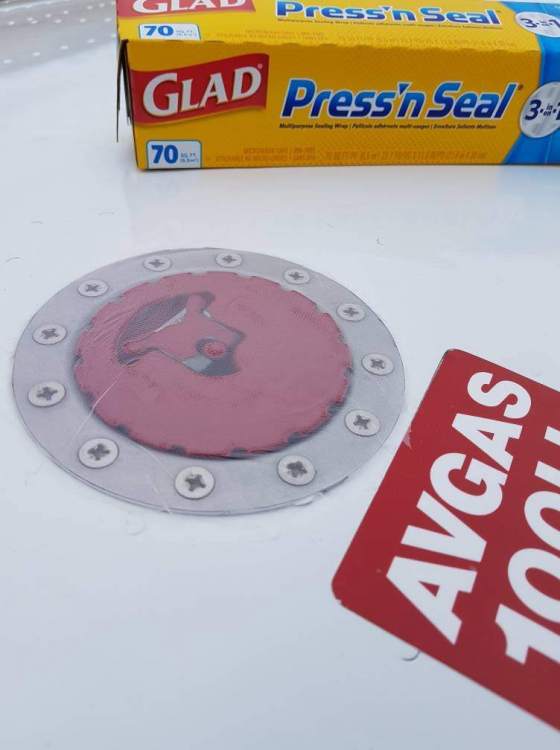
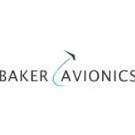







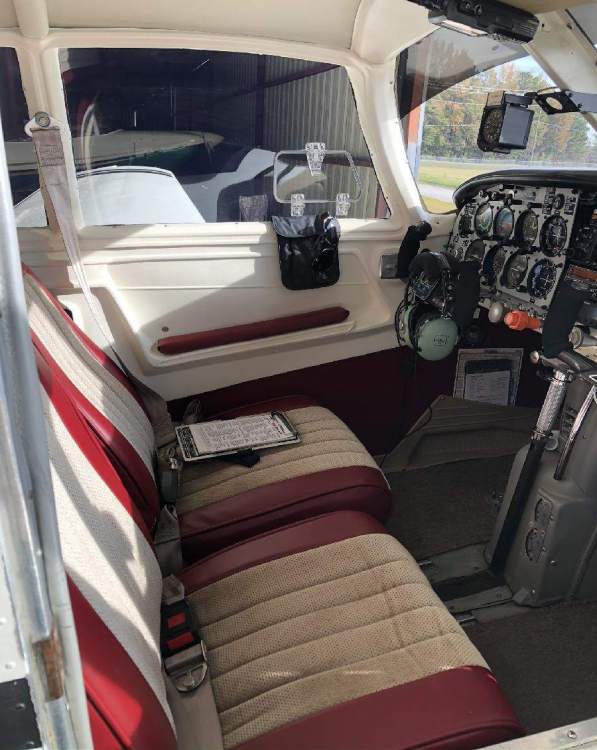
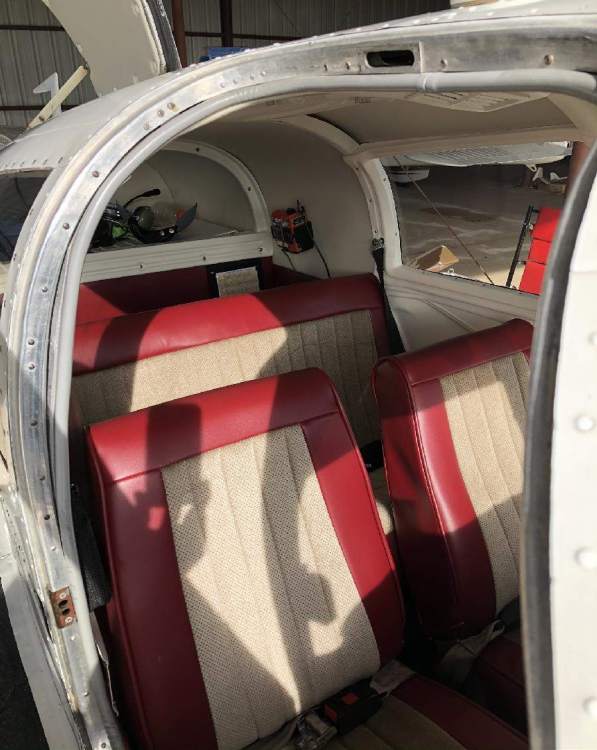
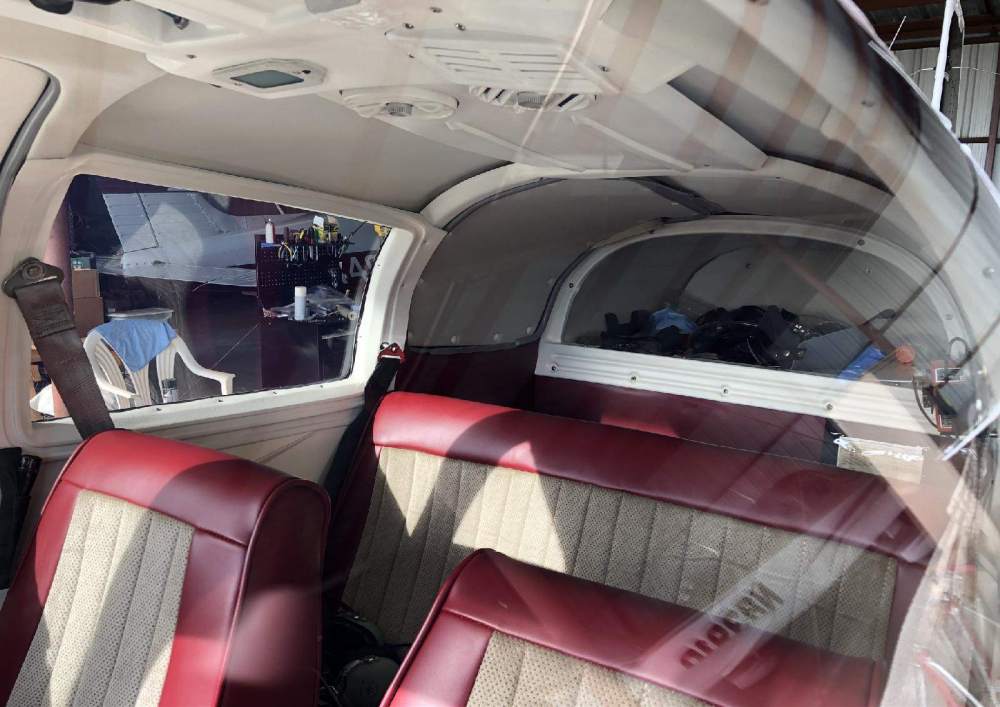
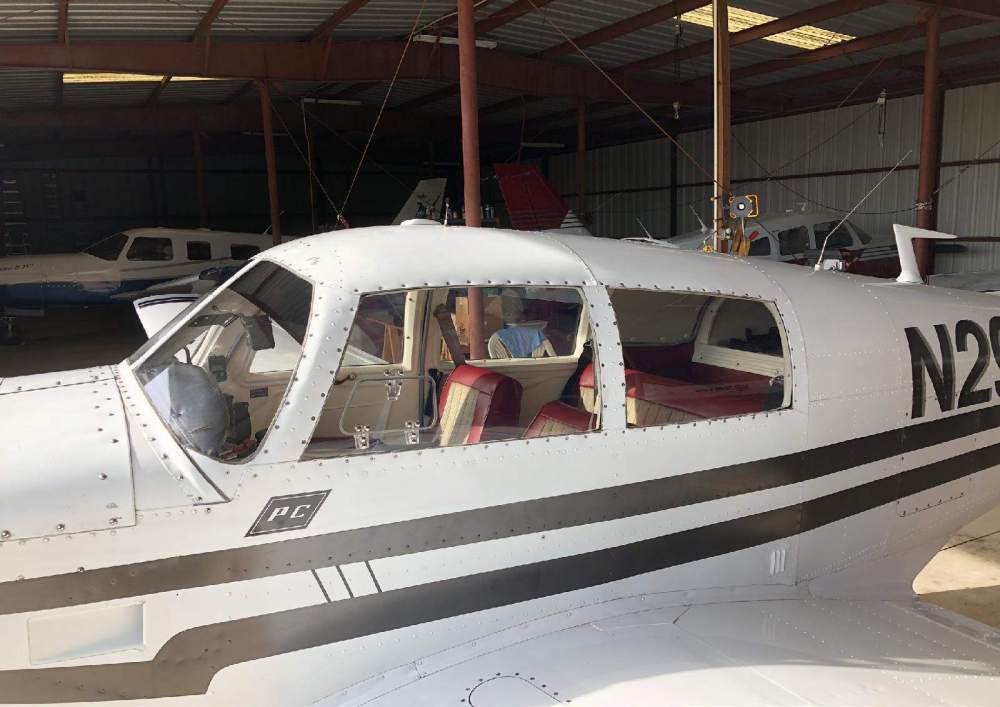

.thumb.png.7c67574d7b28f67b0b4a17760919b1ac.png)
